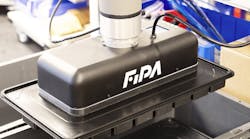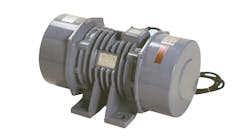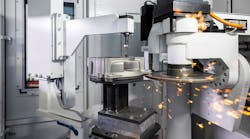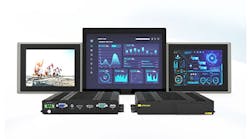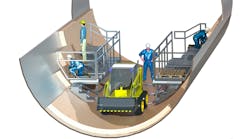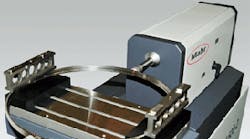MAHR FEDERAL INC.’s Precimar PLM 600-2 high-precision length measuring systems make it possible to measure thin-walled parts, accurately, without concern for elastic deformation.
In high-precision metrology, all parts are elastic, which means they will deform to some extent under applied force, even if only by a few millionths of an inch. Thin-walled parts deform much more readily than others, making it difficult for quality-control technicians to obtain accurate measurements of the undeformed size.
Traditionally, deformation correction was achieved by spreading the measurements out over multiple diameters, or by using air gauging on small parts. Parts have also been clamped down and probed using CMMs, but this adds forces in other directions and can complicate deformation correction even further. More recently, optical systems have been developed that provide a non-contact means of making these measurements, but the systems are expensive and, to date have not achieved the same resolutions as more traditional precision length measurement machines.
Mahr provides the capability to measure thin-walled parts in their undeformed state as a standard feature on the Precimar PLM 600-2 high-precision length measuring systems. This capability is especially important for measuring thin-walled workpieces.
Traditionally, deformation correction was achieved by spreading the measurements over multiple diameters, or by using air gauging on small parts. Parts have also been clamped down and probed using CMMs, but this adds forces in other directions and can complicate deformation correction even further. More recently, optical systems have been developed which provide a non-contact means of making these measurements, but the systems are expensive to purchase and, to date, have not achieved the same resolutions as more traditional precision length measurement machines.
The Mahr deformation correction function is fully automated and available as part of the standard application tools set in the Precimar PLM 600-2 system's controller. The procedure automatically modifies the measuring force in a specified sequence, while recording the corresponding change in the part's measured size. This allows the system to determine the actual elastic properties of the part, which are used, in turn, to calculate the given length in the unloaded, measured force-free state of the part. The measuring machine initially generates a measuring force of 1.2 N, then, invisible to the user, automatically reduces the measuring force in steps of 0.02 N from 1.2 N to 0.8 N, and determines the corresponding measured values.
The principal advantage of this procedure over other static measurements is that the calculated length value is based on a number of individually measured values and therefore yields an uncertainty level lower than any respective single measured value.
The Precimar PLM 600-2 is designed to test a wide range of equipment and workpieces quickly and easily, and with the greatest certainty. Under ideal conditions in a metrology laboratory at 20°C, a measurement uncertainty of MPEE1 (0.085 + L/1500) μm can be achieved (L in mm). This accurate measuring system has a 5-axis, adjustable, universal object table, and a PC-based machine control for several axes; it includes a PC workstation with basic 828 WIN "Free Measuring" software.
Visit www.mahr.com.

